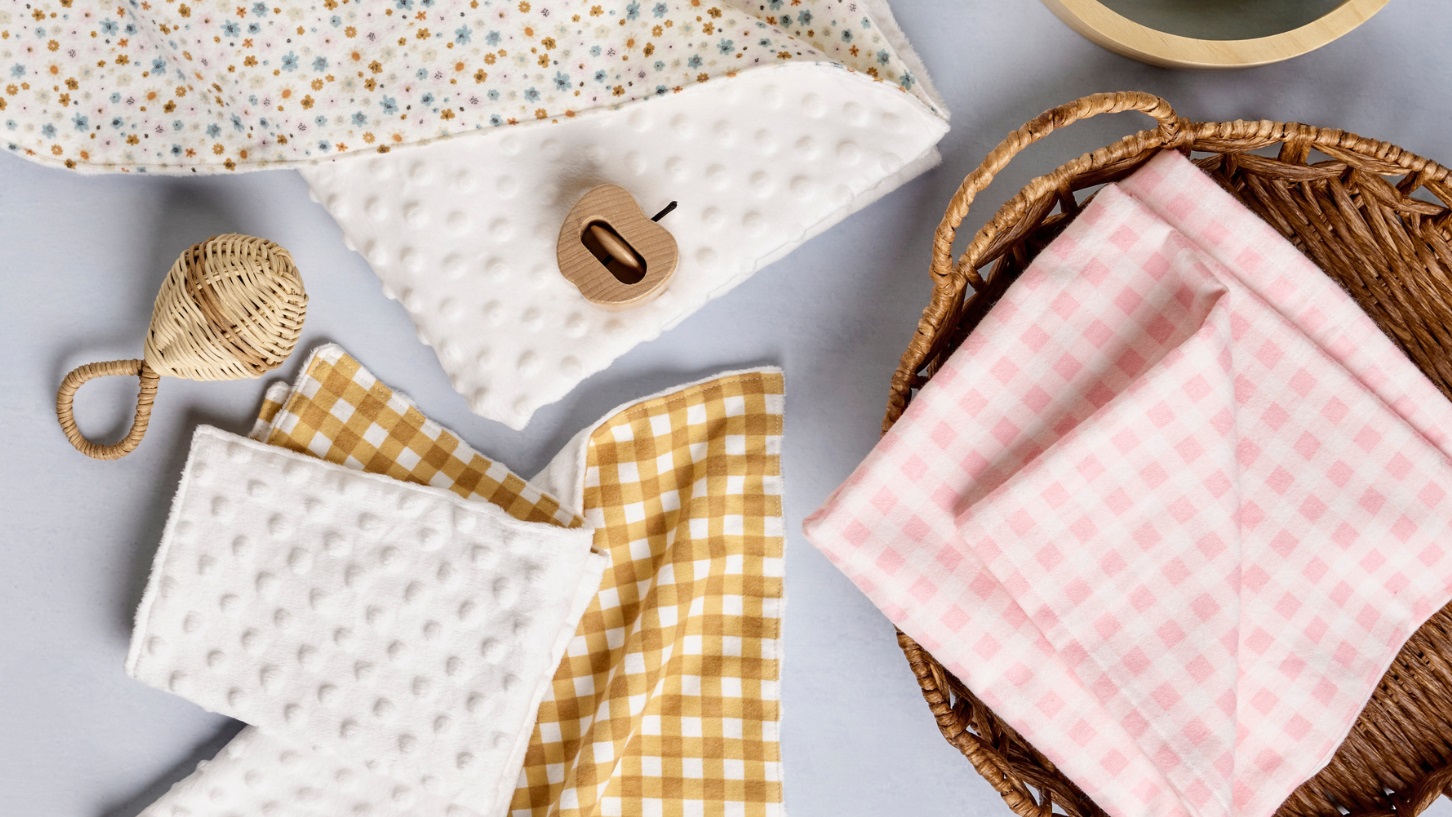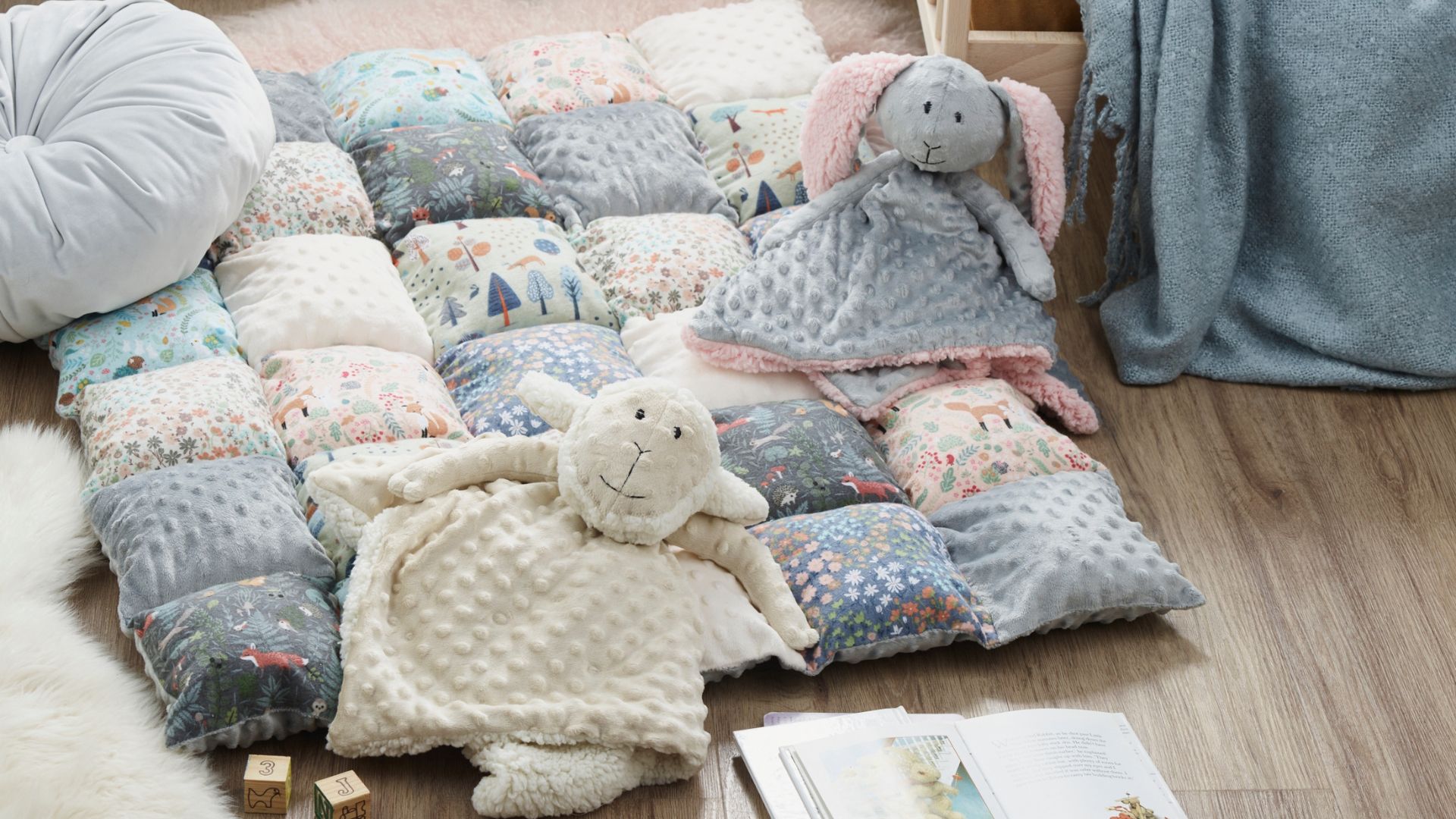 | ||
| Your browser is not supported. | ||
|
Please browse our site using any of the following options:
| ||
Tips And Tricks For Sewing Fleece And Flannelette

When the mercury drops, our desire to wear warm, soft and snuggly clothing rises, so that's also when fabrics such as flannelette and fleece really come into their own. These materials are beloved for their soft and cosy feel that keeps you warm in winter, and can be used to make pyjamas, bedsheets, scarves and cuddly throws and blankets.
The main difference between these two materials is that one is a largely natural fibre (flannel) and the other is a fully synthetic fibre (fleece), yet both are popular choices for many types of winter wear and both come in a gorgeous range of colours and prints.
Whether you choose to make something out of fleece fabric or flannelette is a matter of your personal preference, plus a few practical considerations:
- Durability: Fleece material is usually considered more durable than flannelette and, best of all, it won't pill or wear out over time.
- Breathability: Flannelette is much more breathable than fleece because it features a looser weave that encourages airflow. However, despite its breathability, it doesn't offer moisture-wicking capabilities.
- Warmth: Fleece fabric is generally warmer than flannelette because it traps heat with its dense fibres (especially double-pile fleece varieties, such as polar fleece).
- Care: Flannelette can shrink if washed with hot water, but fleece is known to generate static electricity, which increases if you use a clothes dryer. Washing both in cool or warm water and limiting the drying to a short spin dry and then line drying will keep both materials in good condition.
So, what other things should you know about flannelette and fleece before jumping into your own sewing project? Let's look at each one in more detail.
How To Sew Flannelette
Made from wool, cotton or other synthetic fibres, flannelette is a directional fabric, which means it has a nap (i.e. raised or fuzzy surface). Whether you're making a flannelette shirt, nightwear or other flannelette accessories, you'll need to ensure all the pieces of your flannelette project are cut in the same direction because the material looks either slightly lighter or darker depending on which way it is cut.
Before doing any sewing, you should always give your flannelette material a wash. This will get any possible shrinking out of the way, rather than it happening to the finished project. This can be particularly noticeable if you have sewn your flannelette with other materials that don't shrink, which can lead to your seams puckering and your fabric bunching up. Pre-wash your flannelette material in hot water on a delicate cycle using a laundry delicates bag to help prevent fraying.
Learning how to sew flannelette means being aware of how its weave will affect your sewing. Flannelette's loose weave causes it to fray easily, so you should always finish your seam edges with an overlocker to avoid those unravelling threads. For best results, go with a zigzag stitch or finish with a French seam. Stay stitch or baste around any curved seams before sewing to make the process much easier.
If you are using a seam ripper to remove stitches in flannelette, be careful not to pull and stretch the material as you do so. Be even more careful not to tear holes in the delicate flannelette fabric!
When ironing flannelette, make sure you lift and press the iron to avoid warping, instead of running it across the fabric. You'll also find that starch is your best friend because it will prevent the fabric from stretching and distorting.
Flannel vs flannelette
These words are often used interchangeably, but there are a few differences between flannel and flannelette that you should know about. These differences come about due to what each material is made from and how they are created. This table will simply the differences:
Flannel | Flannelette |
Made from wool, cotton or synthetic materials like polyester | Made from brushed cotton |
Brushed on one, occasionally two sides | Napped and brushed on both sides |
Tightly woven and tough | Loosely woven and breathable |
Machine Settings For Flannelette
- Needle: A universal 100/16 needle works great, although flannelette will dull your needle so be sure to change regularly.
- Foot: A walking foot will help prevent the fabric from stretching and distorting while sewing, or you can use a general foot combined with heavy pinning to give you better control.
- Thread: Polyester (all-purpose) thread works best because it has a little give and is stronger than cotton.
- Stitch Length: Increase stitch length to 3 mm.
- Tension: Reduce tension and pressure gauge a little when working with flannelette because too much tension will stretch your fabric and cause pulling.
Make sure to clean out your bobbin and bobbin case as well as around the needle, as flannelette will cause lint to accumulate in these places.
How To Sew With Fleece
Unlike flannelette, fleece is a fully synthetic fabric but, similar to flannelette, it has a nap, which appears lighter or darker depending on which angle it is viewed. Consequently, when cutting your fleece fabric, be sure to lay out your pattern pieces facing one way, usually with a downward nap.
Given fleece is a knit fabric, it can be cut without fraying, which makes it perfect for no-sew projects, such as blankets, although there's really no limit to your fleece project ideas - once you know how to sew with fleece you can make cardigans, hoodies, mittens, scarves, arm warmers, socks and more. There's also no need to overlock the edges of your work because the knitted weave won't unravel.
Learning how to sew with fleece starts by figuring out which side of the fabric is which. Identifying the right and wrong sides of fleece can be difficult because there's only a subtle difference between the two. On printed fleece, the design will appear crisper on the correct side of the fabric. On plain-coloured fleece, it can be harder to tell, so we suggest cutting a small strip of the fabric and pulling it across the grain. When you relax the fabric you'll find the edges curl towards the wrong side of the fabric.
You can use a washable pen to mark the wrong side of the fabric when sewing a garment or project to avoid any confusion. Because it won't shrink, you don't need to worry about fleece warping out of shape even when in a finished project.
How to sew polar fleece
Wondering how to sew polar fleece? Polar fleece is extra-thick and fuzzy on both sides, and luckily it can be handled in the same ways that you would regular fleece. You may like to use a stronger needle to help it pierce the thick fleece, but otherwise you can sew with polar fleece normally. Once you know how to sew polar fleece, use it to create warm jackets and jumpers for cold weather wear.
Machine Settings For Fleece
- Needle: Sharp needle or ballpoint needle, although fleece will dull your needle so be sure to change it regularly.
- Foot: Use a walking foot so the fleece doesn't move when you're sewing, or reduce the tension on the presser foot.
- Thread: Polyester thread, which can stretch, will accommodate the give of the fabric.
- Stitch Length: Increase your stitch length. For seams that need to stretch, use a small zigzag.

Sew Fleece And Flannelette With Confidence At Spotlight
Fleece and flannelette are great fabrics to work with once you know how. We hope you refer back to these tips and feel confident in your future sewing projects - we can't wait to see what you create! Shop our huge range of fleece and flannelette fabrics online now, where you can safely pay and have your fabrics home delivered. Or visit your nearest Spotlight store, where our friendly team will help you choose the ideal fleece or flannelette material for your project.
For more information on how these materials compare, read our blog on fleece vs flannelette, which also includes some fine project ideas you can make! And make sure you have everything you need to work with these materials by checking out our guides on sewing machines, sewing needles and threads before you buy.




